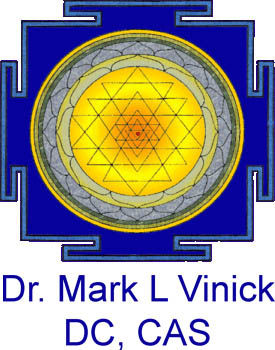[An edited version of this article appeared in the March, 2007 issue of LA Yoga and Ayurveda Magazine.]
Understanding Prakruti and Vikruti, two concepts basic to Ayurveda, is fundamental to our understanding of how Ayurveda can help us in every aspect of our life. Prakruti is our nature, our “constitution”, with which we were born. While our Vikruti is our current state, often referred to as our “imbalance”. Seems like a simple concept. Yet I have observed much confusion concerning these basic ideas, especially in readers new to Ayurveda. Lets take a closer examination of these concepts to help us appreciate how important they are to achieving and maintaining our optimal level of health and well-being.
Both Prakruti and Vikruti are comprised of specific proportions of the “Doshas”. The Doshas are Vata, Pitta, and Kapha. They are derived from the five great elements, Space, Air, Fire, Water, and Earth. These are ancient concepts and may seem a bit esoteric, but we do find them represented in the scientific models of the different states of matter: gaseous, radiant, liquid, and solid.
Vata dosha consists of the elements space and air. It can be visualized as wind. It is that which is responsible for movement within the body: respiration, blood flow, musculoskeletal movement, movement of thoughts, etc. Pitta dosha consists of the elements fire and water. It can be visualized as a flammable liquid, ie. fuel. It is responsible for generating heat within the body, metabolism, transformation and assimilation. Kapha dosha consists of water and earth. It can be visualized as…. Yes you guessed it… mud…perhaps better expressed as clay. Kapha is responsible for creating the structure and support of bodily tissues.
So, Prakruti is our natural constitution. It is the specific proportion of the doshas with which we were born. Yet, it is not determined at birth. It is in fact determined at the moment of conception. There is a growing trend within the field of Jyotish (vedic astrology) to attempt to determine Prakruti from the natal birth chart. Our Jyotish (astrological tendencies) are determined at birth. Prakruti from conception. It is my experience that the birth chart can be very helpful in clarifying the dosha in which we are prone to experience imbalance, and especially when this is likely to occur. But I personally wouldn’t use it alone to determine Prakruti.
There are currently many excellent books now available that do a wonderful job of explaining the basic concepts of Ayurveda. They describe the attributes of the doshas and include many questions to help us determine our body type or Prakruti. Usually qualities and traits that are considered long standing, ie. many years duration, are considered to be due to our nature. While those qualities that are of more recent onset are considered as our imbalance, or Vikruti. Upon closer examination this distinction isn’t so obvious when you consider that someone can have a very long standing imbalance going back all the way to early childhood. In fact, someone may in fact be born with an imbalance. Since Prakruti is determined at conception, if during the period of gestation, in which the fetus is developing, the mothers’ diet and lifestyle are less than ideal, imbalances can occur. These unbalancing influences are karmic in nature, and could be seen in the natal Jyotish astrological chart, as it can predict where and what kind of imbalances we are prone to, but it is Vikruti, not Prakruti.
Also, I have met many wonderful, knowledgeable Ayurvedic practitioners from India who will tell their client what their “dosha” is, based primarily upon pulse diagnosis, and then prescribe herbal, dietary, and lifestyle recommendations. Most people assume they are being told their Prakruti (constitution), but it is the Vikruti ( current imbalance) that is usually being determined.
This is for a good reason, because it is the Vikruti that needs to be addressed. Most people are not in their true nature (Prakruti), they are imbalanced. .According to the Charak Samhita, the authoritative text of Ayurveda, the duty of the Ayurvedic physician is to determine Prakruti (our constitution), Vikruti (our imbalance), and then prescribe measures to correct the imbalance and return the person back to their normal balanced state. So it is the Vikruti that we treat, not the Prakruti. To determine our Prakruti and then follow an Ayurvedic diet and lifestyle regime for our Prakruti alone could create an imbalance. For example, if we were a kapha Prakruti, but had a vata imbalance (something I see much of the time), by treating kapha, we would be increasing vata. This would in effect make our imbalance worse. Obviously, if our Prakruti and Vikruti were the same, then this imbalance would not occur.
Seem complicated? Well it is and it isn’t. The Ayurvedic practitioner addresses our imbalance, while taking into account other factors, such as: our constitution, age, climate, season, occupation, life purpose, etc.
Many of the recommendations that Ayurveda has to offer are practices that the individual incorporates into their diet and lifestyle. It is an active program, requiring participation and action on the part of the client, rather than a passive one that is being done to them. The actual Ayurvedic evaluation, in which the Prakruti and Vikruti are determined, is not something that can easily be determined by oneself. These are best determined by a trained and experienced Ayurvedic practitioner.
Once we know our Prakruti (constitution) and Vikruti (imbalance), and then correct that imbalance so we are functioning in our optimal state of balance, we can then follow an Ayurvedic routine in harmony with our Prakruti, taking into account seasonal changes, and stages of life.
